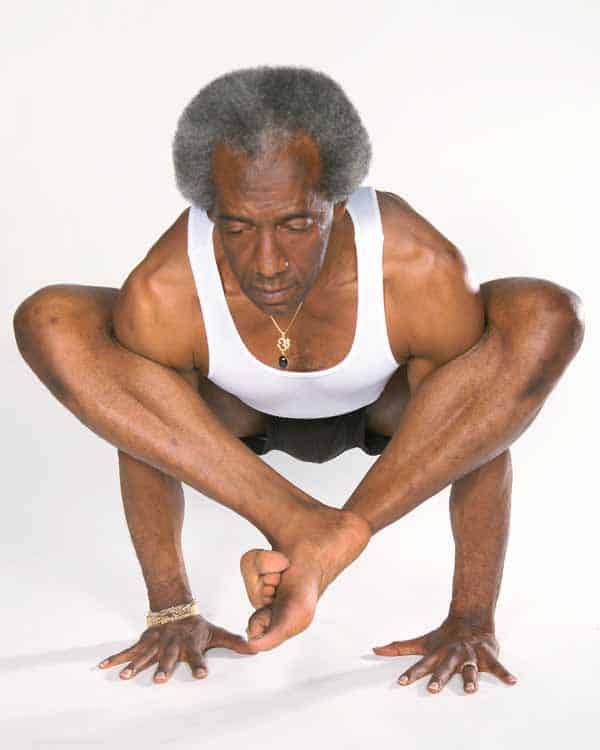
A recently published article in the New York Times “Women’s Flexibility is a Liability (in Yoga)” inspired me to write this post. The article discusses how women are at greater risk for hip joint damage because they tend to be more flexible, especially in the hips, than men. Some of the poses in yoga require hip positioning that moves beyond normal mechanical limits this factor paired with high flexibility increases the chance of injury. I believe it’s more a matter of taking basic safety precautions, the same that you would (or should) take when engaging in any other form of physical activity.
Yoga’s focus on physical and spiritual health is one of the biggest reasons for its widespread popularity. A fact that is often disregarded, though, is that yoga can be as physically intense and challenging as any other form of fitness workout.
Just like anything else that gets your blood pumping and your muscles working, yoga can cause injuries when done improperly. Instead of jumping to the conclusion that women might want to reconsider taking up yoga, I’ve outlined some of the most common causes of yoga injuries and how you can avoid them to reap the many health benefits yoga has to offer.
1. Not warming up
Despite the explosion in yoga’s popularity, many still believe the misconception that yoga can’t give you a good physical workout. However, anyone who’s actually tried or practiced yoga will tell you that it can indeed make you sweat buckets. Yoga is equally relaxing as it is physically demanding – building strong, lean muscle through targeting a variety of muscle groups and emphasizing movement control. As with any form of physically demanding activity, a proper warm-up is required before you jump in. In yoga, a warm- of stretches and breathing exercises before going into various asanas and getting your flow on.
2. Not using props or modifications
Many people approach yoga with an aversion to using props or asana modifications – adopting this attitude is another, surefire way to hurt yourself. Asana variations and modifications are taught in classes to help students ease into poses by providing varying levels of difficulty. Just because a pose “looks” easy doesn’t mean you can perform it easily and properly — especially with no prior practice or experience. You can’t go from novice yogi to inversions master in just a class or two, or even 10. So don’t stress if you can’t do the exact same poses that you see your instructor and classmates doing! Using props and performing modifications doesn’t make you a lame yogi, it makes you a smart one. Know and respect your physical limitations and remember, just like everything else in life flawless execution requires practice.
3. Skipping the cool down and savasana (Corpse Pose)
Most people, not just yogis, tend to forget that the cool down part of every session is just as important as the warm up. Remember, yoga engages different a wide variety of muscles (sometimes ones you didn’t know you had) emphasizing control over your body – it’s a lot of work! So after a good workout session, you have to allow your nervous system to cool down and return to its “normal” state. Don’t take your childs pose and savasana for granted, these poses help your body relax and bring “closure” after an intense yoga session.
4. Ignoring existing health issues
Beginner yogis tend to be more shy during the first few classes, especially when it comes to communicating with their teacher. Some don’t tell the instructor about their back issues a recent ankle sprain or even a surgery they had years ago because they don’t want to draw attention to themselves and just want to blend in. This often leads to serious injury, leaving you and your body in worse condition that it was when you arrived to class. No one will judge you, we’re here to help you be healthy so please, always tell your instructor about any pre-existing health conditions you might have.
5. Not listening to your body
 One of the aims (and benefits) of yoga is learning the ability to build a deeper connection between your body and mind. All yogis are taught different physical and mental techniques to foster this connection. As this connection grows, many become more aware of pain and strain to their body – listen to these signals. If you’re able to perform a pose but can’t do so without feeling strain and discomfort, there is a huge possibility that you are doing it wrong or you’re pushing your body too hard.
One of the aims (and benefits) of yoga is learning the ability to build a deeper connection between your body and mind. All yogis are taught different physical and mental techniques to foster this connection. As this connection grows, many become more aware of pain and strain to their body – listen to these signals. If you’re able to perform a pose but can’t do so without feeling strain and discomfort, there is a huge possibility that you are doing it wrong or you’re pushing your body too hard.
Practicing yoga safely and painlessly all boils down to the connection you have with your body. It is ultimately what should guide and inspire you in your practice. Never work to pain, always work to what is comfortable, as you continue to challenge yourself and push the limits of your yoga practice.
Yoga is a great workout that offers many health benefits for both mind and body and, like any form of exercise, certain precautions, including having a qualified instructor, must be taken to prevent injury. If you have any other questions about yoga you can visit our Exhale Studios or contact me via email tomfeest@eliteclubs.com.
 Written by Tom Feest, CYT, ERYT, Elite Sports Clubs Yoga Director.
Written by Tom Feest, CYT, ERYT, Elite Sports Clubs Yoga Director.
Tom Feest (a.k.a. yogaman) is a Certified & Registered Yoga Teacher and the director of Exhale Studios for all five Elite Sports Clubs locations throughout the Milwaukee area. Tom instructs many variations of Yoga including Beginners, Restorative, Hot, Vinyasa Flow, and Power Flow which is his favorite. He continues his education regularly attending conferences and additional seminars to stay current with the ever-changing world of yoga.

2 Comments
Michaelle, Great response I agree with your additional comments on the sitting asana's knees below hips especially for men. I encourage sitting on a block. I have checked your website on alignment and appreciate your knowledge.
Namaste
Yoga pose biomechanics require some body positions that flex the spinal column and put huge stresses on the ligament tension needed to keep joints stable for movement. I am Michaelle Edwards, the woman mentioned in this article. Your comments about warming up and paying attention make sense but the bigger issue is the right angle positions of yoga that reverse the natural spine curves in forward bends and also the crow pose shown above. There is nothing to be gained in functional movement by training your trunk muscles to shorten and remove the spine curves. Also the sitting poses shown above where peoples knees are higher than the hips is another danger. They should be on bolsters so the hip angle is higher than the knee. Most certainly the lower back curve is collapsed and the sacral ligaments are being loosened which creates a laxity that is considered a major cause of hip joint failure. Please see my website at http://www.yogalign.com